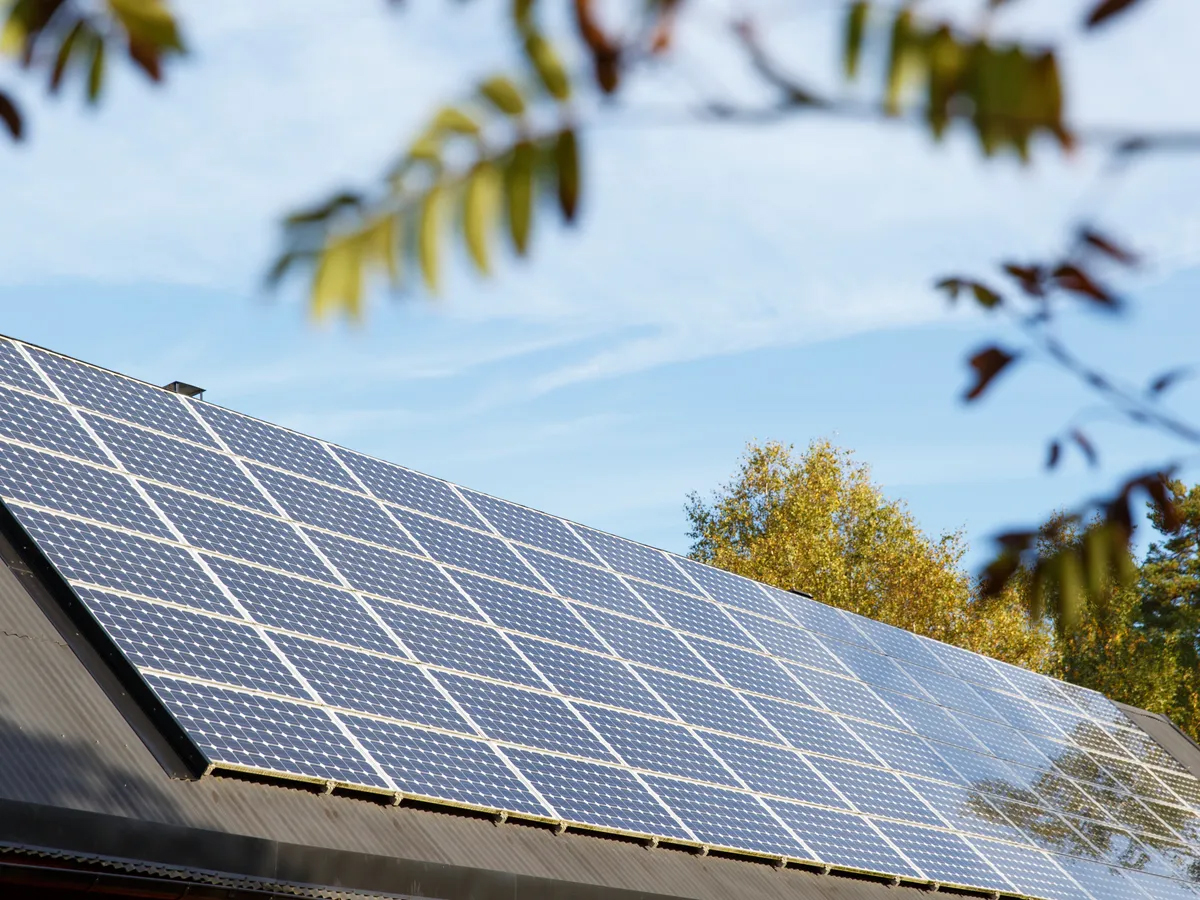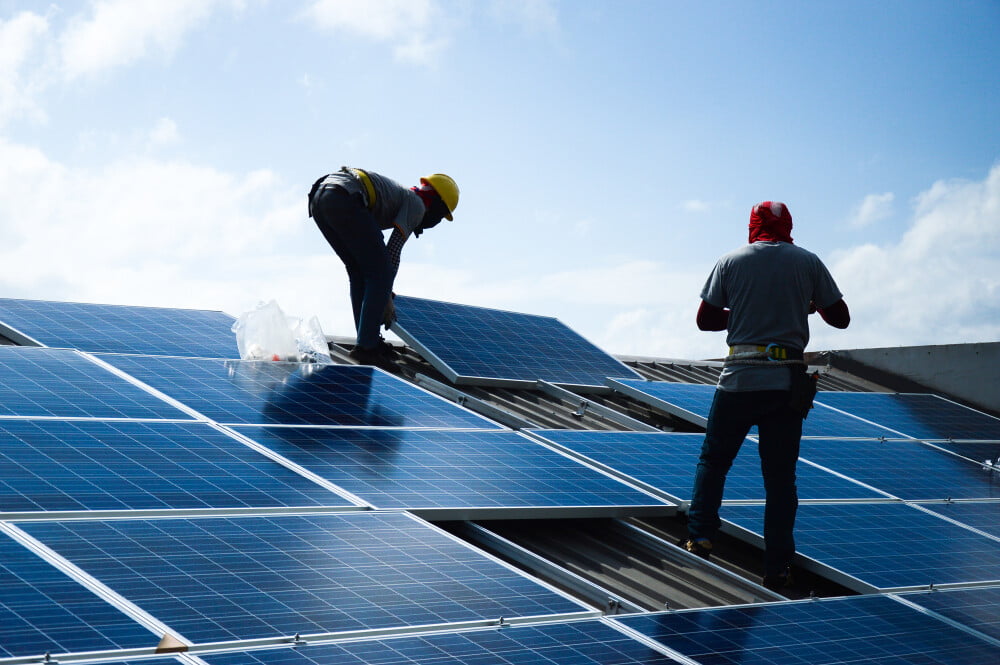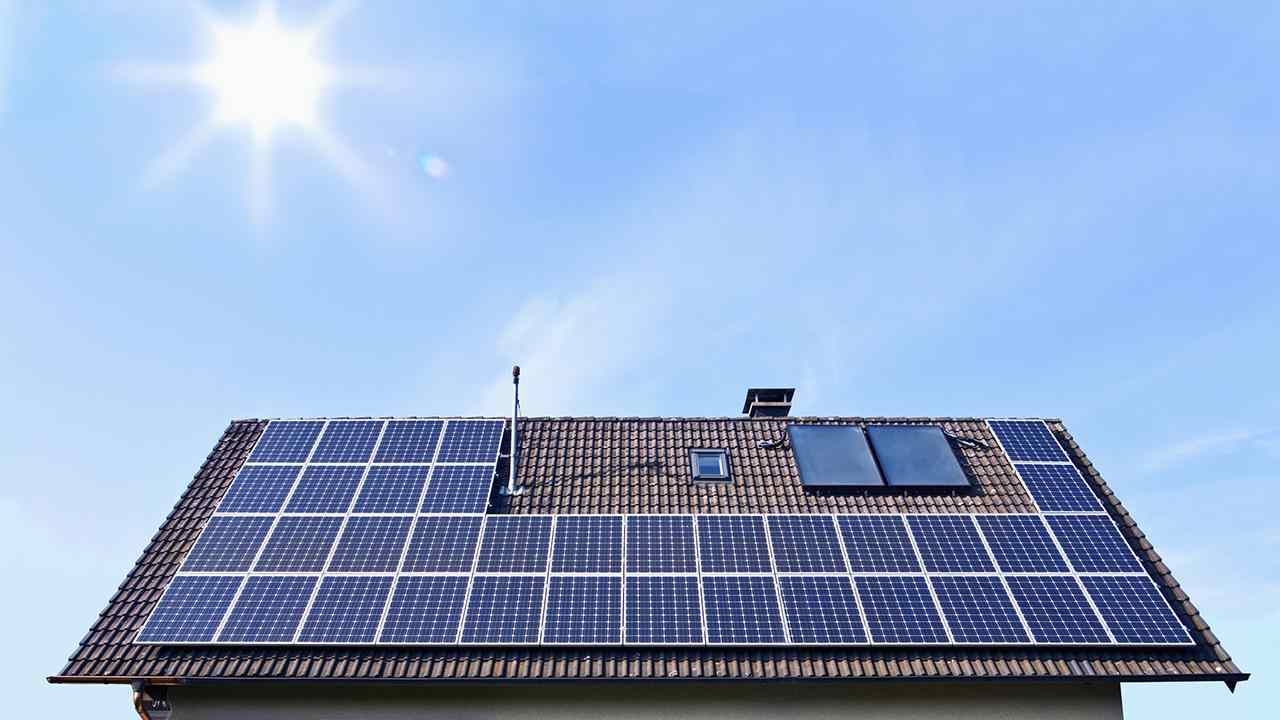Optimize the installation angle and orientation of monocrystalline solar panels. Power generation efficiency will go up by approximately 5% to 10%. Partial shading conditions can see around 5-10% gain in power output with multi-MPPT inverters. Keep cleaning the panel surface frequently to avoid a 3% to 5% loss in the generating power due to dust and contamination.
Optimize Installation Location and Orientation
Since the light conditions of monocrystalline solar panels are highly sensitive, the optimum installation place and orientation should be chosen to have maximum power generation. First of all, the places selected for their installation must be appropriate to receive adequate sunlight without any obstacle, since it may cause loss of power because of shading. Statistics show that improper shading might result in annual power generation loss as high as 15% to 25%. Analysis for preliminary evaluation to reduce shading risks can be done by using solar shading analysis software such as PVsyst.
For the majority of the day, due south in the Northern Hemisphere and due north in the Southern Hemisphere allows sunlight to fall on the panel from nearly a vertical direction for better efficiency in power generation. Actual data points out that every 10° of deviation from the north-south orientation is able to lead to a loss of 2% or 3% in total power generation, which is serious for the high annual power output of photovoltaic power stations.
The tilt angle should be noticed, too. Generally speaking, the panel tilt angle should be equal to local latitude and allow it to maintain its high-power generation efficiency through different seasons. In reality, a few projects set the tilt angle to 85% to 90% of the latitude angle, as such adjustment will balance the power generation of summer and winter. For those who require high efficiency, the installation of a single-axis or dual-axis tracking system effectively increases the amount of power generated. Large-scale power stations can boost their power output by 15% to 30%.
Consider Temperature and Ventilation Impact on the Panel
Temperature is one of the most important factors in deciding the efficiency of solar panels. The temperature coefficient for monocrystalline solar panels mostly lies between -0.3%/°C and -0.4%/°C, and it means that with every single degree centigrade rise when the panel temperature rises above the normal test temperature of 25°C, the output power of the panel decreases by 0.3% to 0.4%. The temperature of the panel will easily reach 60°C or more in the hot summer season. This results in the loss of over 10% efficiency of the panels. So, consideration should be taken at the time of installation and design regarding how to reduce the temperature of the panel and optimize the ventilation system.
The best method is leaving a margin at installation that ensures aeration. More specifically, there should be a distance of at least 10-15 cm between the panel and the surface where it has been installed. It would mean cooling through natural wind and hence reduction of temperature in panels. In ground-mounted systems, mounting brackets can be raised for better cooling, especially in high-temperature regions.
Besides this, there are active cooling systems, including water or air cooling. Such technologies will work effectively in those places where the ambient temperature is above 40°C and reduce panel surface temperature, enhancing general efficiency. According to the studies, in extremely high-temperature areas, like deserts, installation of a water cooling system allows lowering the panel temperature by 5°C to 10°C, which generally enhances power generation by approximately 5% to 8%. These technologies are more expensive, but the advantages in certain conditions and power plants balance the extra investment.
Keep Panel Surfaces Free of Obstructions
The main factors that affect the generation of power by solar panels are dust, bird droppings, and leaves. In fact, studies have shown that if the surface of monocrystalline solar panels becomes covered by a light dust layer, power generation is decreased by 3 to 5%. When there are more serious contaminants or bird droppings, partial shading effects reduce the overall panel efficiency by more than 20%. For that reason, keeping the surface of the panel clean guarantees high efficiency in power generation.
The frequency of cleaning depends on the climate and environmental conditions in the area where it has been installed. For example, in dusty desert areas or industrial zones, one may be able to clean once a month, but in more rainy areas, rain is capable of self-cleaning to a good extent, so cleaning would only be necessary once every six months. While cleaning, one should use a soft brush or sponge with clean water, avoiding corrosive chemicals that can damage the anti-reflection coating on the panel.
In cold parts of the world, there is an accumulation of snow during winter. While it is true that monocrystalline solar panels have a lower temperature coefficient and can keep high efficiency in low-temperature conditions, snow physically prevents sunlight from reaching the silicon material. To get rid of this snow from the panel surface, specialized solar snow removal tools should be used; this can be gently swept away without applying much force to the panel so as not to crack or scratch the panels.
For ground-mounted solar systems, trees and vegetation in the vicinity should be trimmed regularly to avoid long-term shading due to the growth of foliage. Practice has shown that even short-term shading can reduce panel power generation by 10% to 15%.
Use Maximum Power Point Tracking Technology
The MPPT technology ensures that, under various environmental conditions, photovoltaic panels operate at the highest possible efficiency. Its operating principle, mainly based on adjusting the current and voltage in real-time, is because the light intensity, temperature, and shading will affect the panels to work at the maximum power point. By applying the MPPT technology, one would be able to realize the maximum power output of the monocrystalline solar panels in different environmental conditions.
Modern inverters already commonly possess MPPT capabilities and have efficiencies of more than 95%. Multi-MPPT ability in inverters should be prioritized first during installation. This will be very important, especially for systems with complex roof shapes, uneven lighting conditions, or serious partial shading, since the multi-MPPT can separately manage different panel strings in running status and reduce the influence of low-efficiency panels on the total power.
The increase in power generation can be as much as 5% to 10% in a system equipped with multi-MPPT inverters compared to the traditional single-MPPT inverter. Large-scale photovoltaic systems or projects on complex terrain cannot successfully do without multi-MPPT inverters. In addition, micro-inverters or power optimizers can independently control each panel and effectively reduce power loss caused by partial shading for some residential or small commercial systems.
Leverage Energy Storage and Grid-Tie Systems
Monocrystalline solar panels are able to generate a significant amount of electricity under favorable sunlight conditions. However, naturally, the nature of photovoltaic conversion means they cannot produce any power during night hours or on rainy days. As such, energy storage systems and grid-tie systems that utilize excess power can further enhance overall output efficiency.
Energy storage systems typically employ lithium-ion or lithium iron phosphate for storing energy. These high-efficiency energy storage systems store the excess energy produced during the day for use at night or on days when sunlight is insufficient. Data indicates that with an energy storage system, overall energy utilization efficiency can be more than 90%. Besides, in the storage system, an EMS can be introduced to achieve more precise power scheduling and management, thus reducing grid electricity consumption or even reaching self-sufficiency.
In the case of grid-tie systems, it is possible to feed the excessive power back to the grid directly; this not only utilizes the surplus electricity effectively but generates extra revenue due to feed-in tariffs. The government's subsidies for connected electricity in some countries and regions are extremely appealing for residential and commercial photovoltaic systems. In fact, a photovoltaic system with 5 kW can create several thousand yuan every year to create additional revenue by feeding the surplus energy into the grid to enhance the return on investment.



